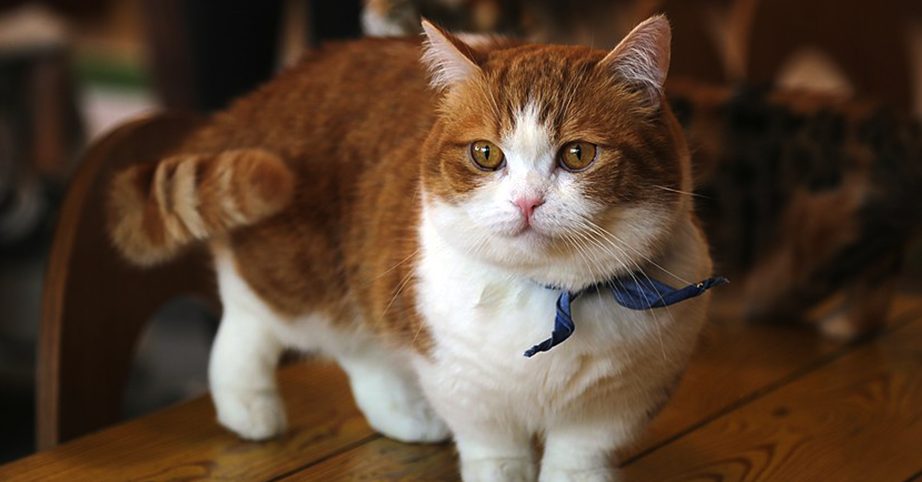Training a cat is often seen as a challenging task, but with the right approach, even a Manx cat can learn to respond to commands, exhibit desirable behaviors, and develop a solid bond with their human companions. Manx cats, known for their playful nature, intelligence, and loyalty, can benefit from both basic and advanced training, making them excellent candidates for pet owners who wish to engage in positive reinforcement training.
In this article, we will explore the various aspects of training your Manx cat, from basic commands to more advanced tricks and behaviors. By understanding their personality, using the right training techniques, and employing consistent, positive reinforcement, you can help your Manx cat become a well-behaved and joyful companion.
1. Understanding the Manx Cat’s Temperament and Learning Style
1.1. The Unique Personality of Manx Cats
Manx cats are known for their distinctive physical traits, such as their taillessness or short tails, but their temperament is what truly makes them stand out. They are intelligent, curious, and affectionate, with a playful and active disposition. Manx cats are also highly social, enjoying interaction with their human families and other pets.
- Playfulness: Manx cats are very playful and have high energy, which makes them perfect candidates for interactive training sessions that involve games and treats.
- Affectionate Nature: They form strong bonds with their owners and enjoy being around people, making them more receptive to training and positive reinforcement.
- Independent Streak: While they are social, Manx cats can also be independent and stubborn at times, which means training sessions may need to be tailored to their unique temperament.
1.2. Intelligence and Trainability
Manx cats are known for their intelligence, which makes them quick learners when the right training techniques are used. They are capable of picking up on patterns and understanding commands fairly quickly. However, they may also get bored if training sessions are repetitive or unengaging. Therefore, it’s essential to keep training fun, varied, and rewarding.
- Quick Learners: Manx cats are generally quick to learn new commands, especially if they are motivated by food, toys, or affection.
- Need for Variety: Like most cats, Manx cats can get bored if training becomes monotonous. To keep them engaged, it’s important to incorporate variety into your training routine.
2. The Basics of Cat Training: Why Positive Reinforcement Works
2.1. The Science Behind Positive Reinforcement
Positive reinforcement is the foundation of all modern cat training. This method involves rewarding a cat immediately after it exhibits a desired behavior, reinforcing that the behavior leads to a positive outcome. By repeating this process, the cat learns to associate specific actions with rewards, which encourages the repetition of those behaviors.
- Rewarding Desirable Behavior: Using treats, praise, or play as rewards helps reinforce the behavior you want your Manx cat to exhibit.
- Timing is Key: In positive reinforcement, the reward should be given immediately after the desired behavior. This helps the cat make the connection between the action and the reward.
2.2. Tools and Supplies for Effective Training
Before starting the training process, you will need a few basic tools:
- Training Treats: Manx cats love food, so using small, high-value treats is a great way to reward them. Soft, easy-to-eat treats are ideal for quick training sessions.
- Clicker: A clicker is a small device that makes a sound when pressed. It is commonly used in clicker training to mark the moment a cat performs a desired behavior, followed by a reward.
- Interactive Toys: Toys like feather wands, laser pointers, and puzzle feeders can be used as rewards or to keep your Manx cat engaged during training sessions.
- Comfortable Training Area: Choose a quiet, comfortable space for training sessions where your cat can focus without distractions.

3. Basic Training: Teaching Your Manx Cat Essential Commands
3.1. Litter Box Training
One of the first things any new cat owner will want to focus on is litter box training. Luckily, Manx cats are usually very clean and instinctively understand how to use a litter box, but there may be times when additional guidance is needed.
- Setting Up the Litter Box: Choose an appropriate litter box and fill it with cat-friendly litter. Place it in a quiet, accessible area.
- Encouraging Use: If your Manx cat is hesitant to use the box, gently place them inside after meals or naps to encourage the behavior. Reward with praise immediately after they use the box.
- Dealing with Accidents: If accidents happen, clean the area thoroughly to remove odors, and avoid punishment. Cats do not associate punishment with the behavior, and it may cause anxiety.
3.2. Teaching Your Manx Cat to Sit
Teaching your Manx cat to sit is one of the simplest and most effective commands. Not only is it useful for getting your cat’s attention, but it can also be a stepping stone to more complex tricks.
- Using a Treat to Lure: Hold a treat in front of your Manx cat’s nose, then slowly move it upwards. As their head follows the treat, their bottom will naturally lower to the ground. When they sit, immediately give them the treat and praise them.
- Repetition and Patience: Repeat this process multiple times, gradually reducing the amount of assistance from the treat. Over time, your Manx cat will begin sitting on command.
3.3. Teaching Your Manx Cat to Come When Called
The ability to call your cat and have them come to you is an important skill, especially if they’re allowed outdoors or roam freely in your home.
- Using Positive Reinforcement: Call your cat’s name in a friendly tone, and when they approach, reward them with a treat. Make sure to keep the reward immediate and consistent.
- Repetition: Practice this regularly in short, focused sessions. Over time, your Manx cat will learn to associate their name with a positive experience.
3.4. Teaching Your Manx Cat to High Five or Shake Paws
Once your cat has mastered basic commands, you can move on to more fun tricks, like teaching them to shake paws or give a high five.
- Targeting the Paw: Gently take your Manx cat’s paw and hold it in your hand. Praise and reward them for allowing you to touch their paw.
- Gradual Reinforcement: After a few successful attempts, encourage them to lift their paw by tapping it with your hand, rewarding them when they respond by lifting it.
- Generalizing the Behavior: Eventually, they will associate lifting their paw with the command “high five” or “shake,” and you can reinforce the behavior by offering treats and praise.
4. Behavioral Training: Managing Common Issues in Manx Cats
4.1. Addressing Scratching Behavior
Scratching is a natural behavior for cats, but it can be destructive if they scratch furniture or carpets. Training your Manx cat to use a scratching post or mat is a great way to redirect this behavior.
- Provide a Scratching Post: Place a scratching post in an area where your Manx cat enjoys scratching. Reward them when they use the post.
- Use Deterrents: If they continue to scratch furniture, use double-sided tape or a natural deterrent spray to discourage the behavior.
4.2. Training Your Manx Cat to Stop Biting
Some cats may nip or bite during play or when they are overstimulated. Teaching your Manx cat bite inhibition is important for safe play.
- Redirect the Behavior: When your Manx cat begins to bite, immediately stop playing and give them a calm “no.” You can also redirect their attention to a toy to satisfy their natural urge to bite.
- Consistency: Always be consistent with your response to biting. Over time, your cat will learn that biting leads to an end to the fun.
4.3. Dealing with Excessive Meowing
Manx cats are known for being vocal, but excessive meowing can sometimes be a sign of stress or attention-seeking behavior.
- Ignore Excessive Meowing: If your Manx cat meows excessively for attention, avoid responding until they quiet down. Reward calm behavior with attention or a treat.
- Provide Enrichment: Ensure that your Manx cat has plenty of mental and physical stimulation through toys, climbing structures, and playtime to prevent boredom-driven meowing.
5. Advanced Training: Teaching Your Manx Cat Complex Tricks
Once your Manx cat has mastered basic commands, you can move on to more complex tricks. Cats are capable of learning a wide variety of behaviors, and training can be a fun bonding experience.
5.1. Fetch and Retrieve
Many cats, including Manx cats, can learn to fetch and retrieve objects, much like dogs.
- Introducing Fetch: Use a favorite toy or ball, throw it a short distance, and encourage your Manx cat to chase it. Reward them with praise or a treat when they bring the toy back to you.
- Repetition: Over time, your Manx cat will learn to associate the action of fetching with a reward.
5.2. Walking on a Leash
Training your Manx cat to walk on a leash can be a great way to provide them with outdoor stimulation while keeping them safe.
- Leash Training: Start by letting your cat wear a harness indoors for short periods of time. Gradually introduce the leash, allowing them to get used to the feeling.
- Outdoor Adventures: Once your cat is comfortable wearing the harness and leash indoors, you can begin to take short, supervised walks outside.
6. Conclusion: Building a Strong Bond with Your Manx Cat Through Training
Training your Manx cat isn’t just about teaching them tricks—it’s about building a strong, trusting relationship with your pet. By using positive reinforcement, being patient, and engaging in consistent training practices, you can help your Manx cat become a well-behaved and happy companion. Always remember to celebrate their successes and enjoy the journey of learning together.























































